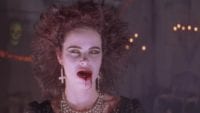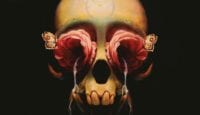Creepshow’s season finale, which delightfully airs Halloween night (though it was made available on-demand a day sooner), did not disappoint us, nor did it dissuade us from our running analysis of the entire season. Episode 6 sustains the show’s major thematic elements that revive EC Comics-style morality tales that are rife with grim humor, and it underscores the show’s deliberate intention to honor classic horror while showcasing new artists in the genre.
Hopefully, you had enough time after your tricking and treating to settle in for the season finale as it aired this October 31st, or had the chance to watch it early. If you haven’t seen the last episode of Season 1 yet, then head on over to Shudder and check it out before reading further to avoid spoilers. The Creepshow TV series encourages us to read the literary horror stories that it features, so also be sure to look into the bibliography of stories featured in Creepshow at the end of this article. These frightening tales will keep you up late as the days continue to get shorter. Don’t worry—they won’t be any less chilling after watching their film adaptations in Creepshow.
Now, if you’re ready, gather ‘round, boils and ghouls. Let’s dive into the last two tales that Creepshow Season 1 offers. Incidentally, both stories remark on supposedly natural, ancient monstrosities that lurk in the depths of large bodies of water. These stories warn us that casual human encounters with entities that inhabit the murky fathoms beyond the scope of our awareness often turn deadly. Symbolically, these monsters dwelling far below the water’s surface provide a metaphor for the fears and dark desires that also lie in wait deep within your mind. So, tread lightly, and be wary as we wade out beyond the depth of your conscious control.
“Skincrawlers”
This episode’s first story, “Skincrawlers,” is essentially a cautionary tale about gratification and laziness. This essence is simple enough to grasp, but the tale’s straightforward moral becomes more obscure when we struggle to identify a true protagonist. “Skincrawlers” also comments on the deleterious human tendency to exploit nature with the precarious assumption that humanity’s power over nature is infallible.
Most of us have, at some point in our lives, participated in a fad diet or something, or have wished that we had a completely different body. In “Skincrawlers,” Dr. Sloan, a once obese but now impeccably fit clinician, seems to have found the perfect easy and fast weight loss solution—one that makes diet pills look like hard work. While scouring the rainforests of Brazil for fat-melting berries, Sloan discovered gigantic leeches with rows of sharp teeth and that thrive on the fat of human beings.
Henry learns about the liposuction leeches with a group of other potential clients at Sloan’s clinic, and he is the only one among them who is not enthusiastic about the procedure. It seems too good to be true. Sloan emphasizes that no dieting is necessary if you allow the leeches to remove your fat, and he assures his clients that the process painless and safe. Still, despite Sloan’s insistence, Harry refuses to submit himself to the leeches.
When Henry later changes his mind and decides to go along with Sloan’s fat removal by leech method, he agrees to go through with it on a promotional live news broadcast. Peculiarly, the vapid news anchors are simultaneously covering an ongoing solar eclipse. It is notable that Henry’s decision to allow the leeches to remove his fat on camera and that many members of the set crew have also undergone the leech fat removal procedure. The situation alludes to our subconscious cultural obsession with body image, which is so largely promulgated by television and mass media.
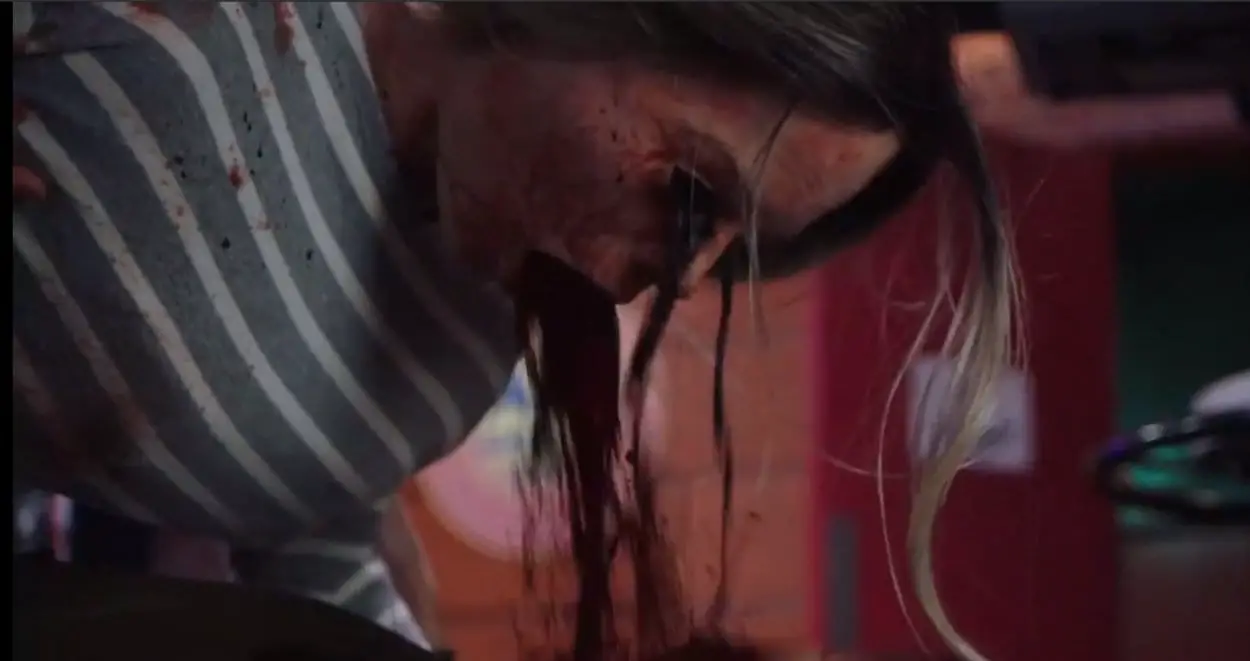
As the total solar eclipse reaches perfect alignment, the drawback of using Brazilian fat-sucking leeches to stay thin becomes apparent. Unbeknownst to Sloan, removing their hosts’ body fat is part of the leeches’ parasitic reproductive exchange. Only during a solar eclipse does the larval leech offspring emerge from gestational dormancy in their hosts’ bodies. The association of this calamitous reproductive event’s coincidence with solar eclipses mirrors the allusion to the same mysterious potency of nature’s designs that creatures dwelling in deep waters portend.
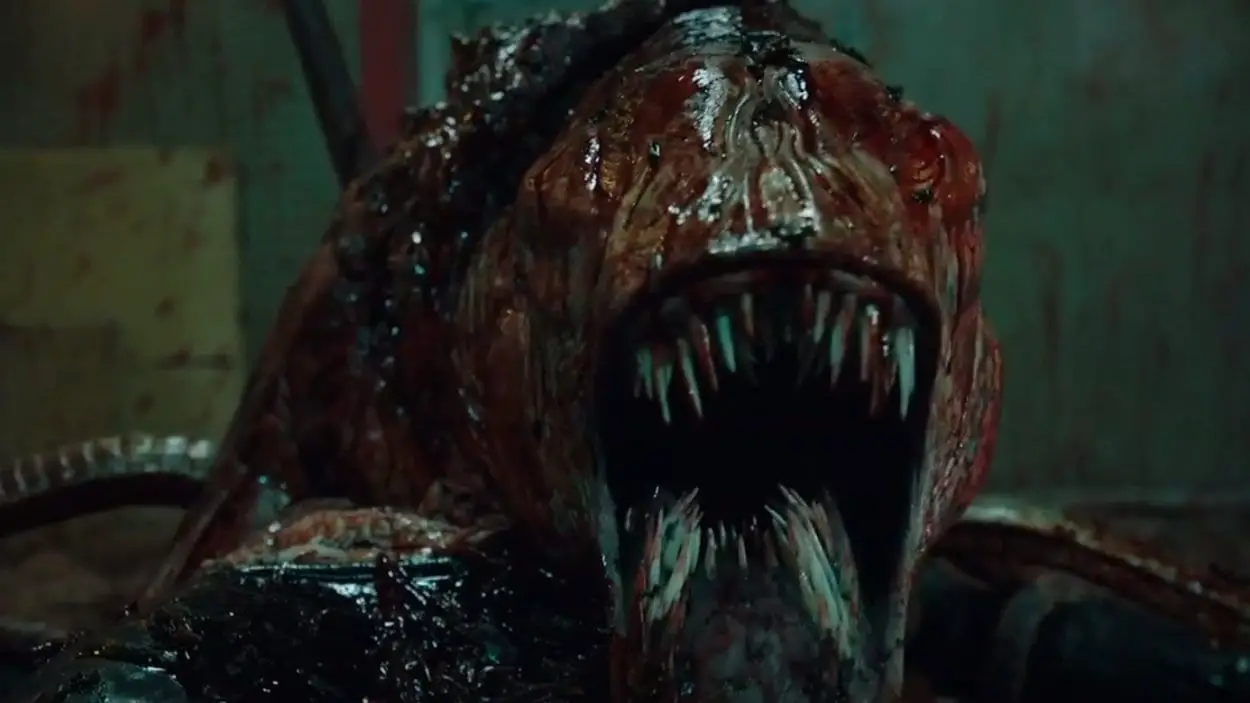
Legions of tiny leeches explode and gush from the destroyed bodies of Dr. Sloan’s clients on live camera. Henry angrily confronts Sloan, accusing him of knowingly endangering his clients for profit. But—because Sloan is presumably his own best, most loyal, and most long-standing client—Sloan’s body suddenly erupts like all the others’ bodies. Instead of myriad tiny leeches, Sloan’s body contains one giant leech monster that pulls Henry towards its rows of teeth with its absurdly large tentacles. Henry manages to crush the giant leech with a vending machine filled with snack foods.
The story ends with a stylized comic framing of Henry’s steely grin as he chews on a candy bar that he triumphantly pulled from Dr. Sloane’s pooling blood. In watching this ending, we at once feel validated by Henry’s victory but also confused by his reaction. Why is Henry (disturbingly) no longer disconcerted by the violent gore? How can he possibly have an appetite at this moment, and why does his gleaming smile remind us so much of The Creep himself? Like Harry (“The Companion”), Timmy (“Gray Matter”), and pretty much every other Creepshow protagonist, Henry is endowed with a measure of The Creep’s ghastly power to escape unfavorable circumstances.

“Skincrawlers” was written for Creepshow by Paul Dini and Stephen Langford. Dini is known for his work in animation and as a comic creator. He has written many well-known Warner Bros. Animation/DC Comics animated series. The director of this story, Roxanne Benjamin, also directed the story from Episode 4 entitled “Lydia Layne’s Better Half.” This is not Benjamin’s first collaboration on an anthology horror film/series; she has also directed in V / H / S (2012) and Southbound (2015). With the contributions of talented and established horror artists and creators like these, it becomes clear that Creepshow aspires not only to showcase new talent but also to codify well-known artists in association with traditional horror icons like Stephen King and George A. Romero.
“By the Silver Water of Lake Champlain”
The second story featured in Creepshow’s Season 1 Finale bears an even more direct morality tale aspect than “Skincrawlers” does, but its perpetuation of a centuries-old legend confirms its overall substance. Tom Savini directs a retelling of the tale about the Lake Champlain Monster, better known as Champ. For a comprehensive history of the mysterious legend of The Monster of Lake Champlain, listen to this episode (below) from the New England Legends Podcast.
Rose is a teenaged girl who lives with her mother, small brother, and her mother’s asshole boyfriend, Chet. The setting is implied to be near Lake Champlain in Vermont or northern New York state sometime in the 1970s. Rose pores over her father’s scrapbooks and notes about Champ. Rose’s mother discourages any mention of the elusive beast of local lore, and we quickly learn that Rose’s father died searching for the creature in the lake. Every exchange that takes place in the story’s opening is overshadowed with tension from the open malice that Chet exudes.
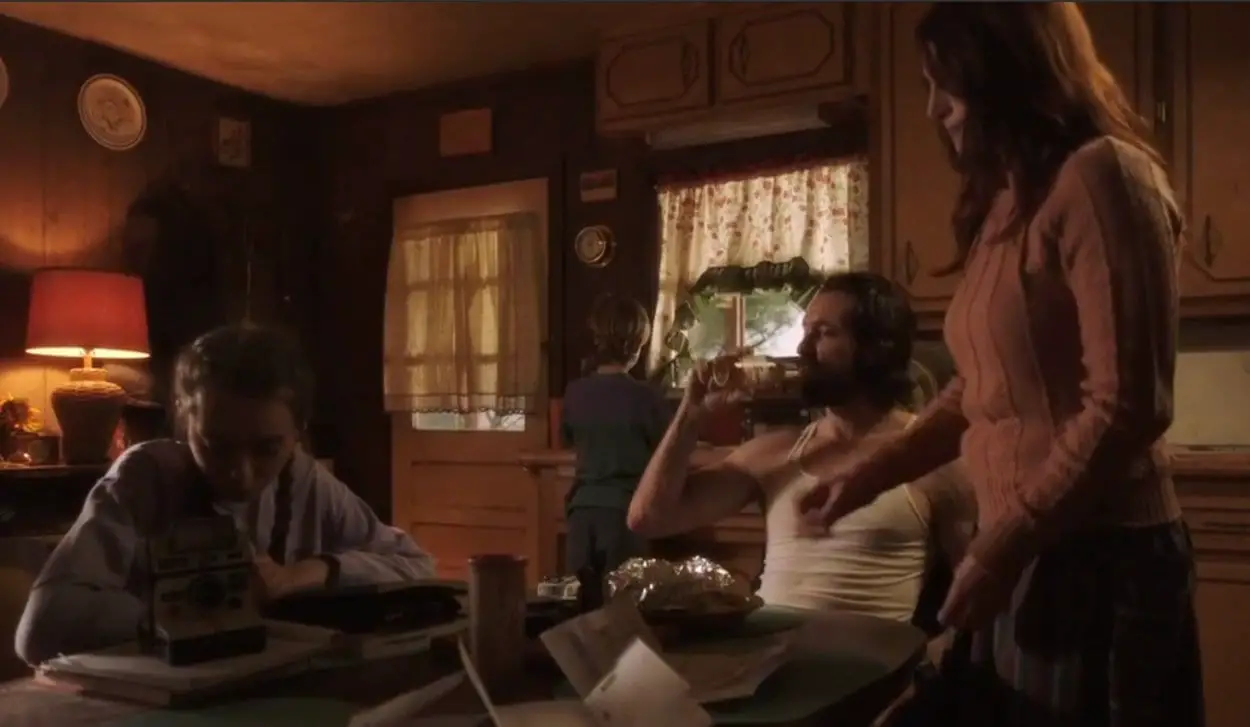
Chet is a Vietnam war veteran who relishes in threatening violence upon the woman and children in his family. Throughout the story, he clearly presents the figure of an uncomplicated villain. He—and, by extension, everyone in his vicinity—suffers from what these days we call “toxic masculinity.” Rose discovers a creature that appears to be Champ lying dead on the lake’s shore. Believing it to be the renowned mythic beast, she wants to dedicate the discovery to her father.
Chet arrives on the scene and insists that he will announce the discovery as his own. When the children protest, he terrorizes them with a large blade. At that moment, a creature that is almost incomparably larger than the one on shore emerges from the lake and devours Chet effortlessly. Champ then expressively bemoans the corpse of what is presumably her offspring and mournfully drags the monstrous body back into the depths of the lake.
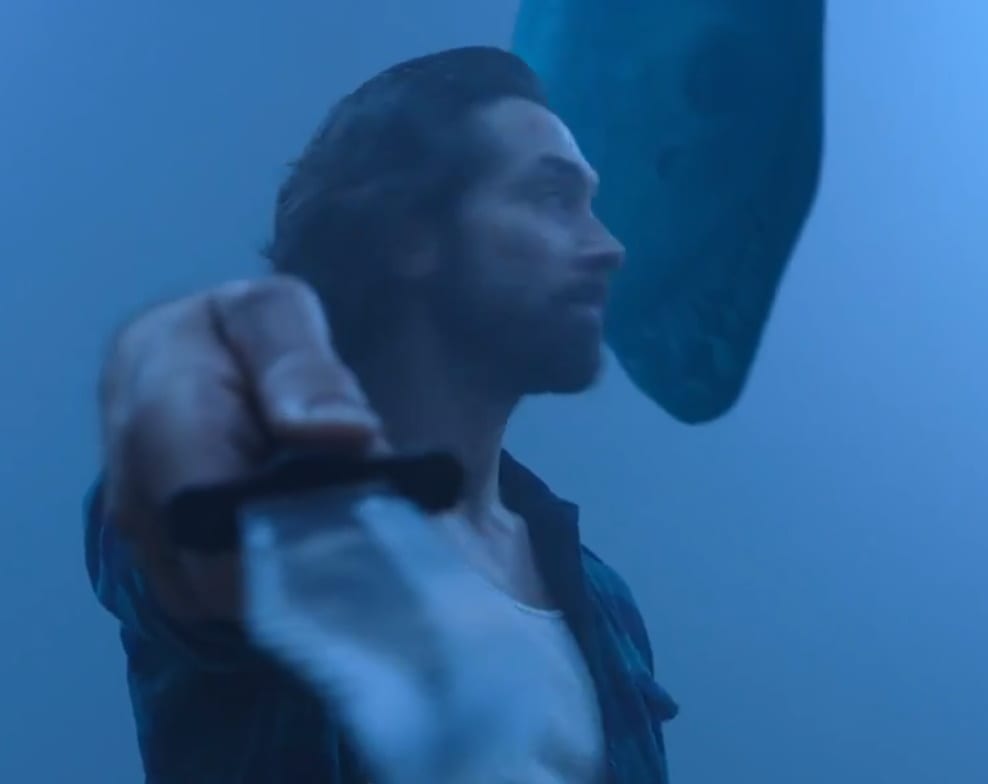
The writers of this retelling of the well-known legend of the Lake Champlain Monster endow the story with culturally relevant themes. Most especially, the telling comments on the necessity of protective fierceness that attends motherhood (and parenthood, more generally). Initially, Rose’s mother is submissive to Chet’s deprecating abuse. Champ’s abrupt destruction of Chet enables the restoration of peace and security among Rose’s family. It is no coincidence that, for the first time, this retelling establishes that Champ is a female monster, and she is an aggrieved mother.
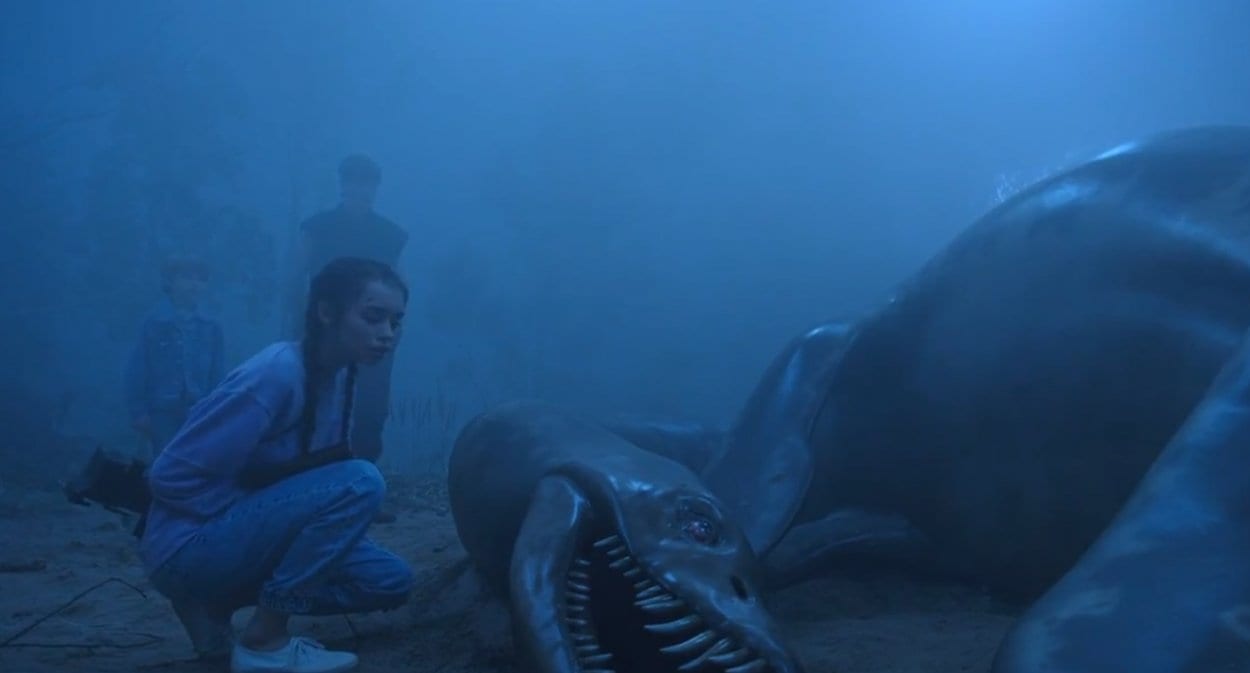
It is fitting that Tom Savini, a legend in his own right, should direct the ultimate episode aired in Creepshow’s first season. Savini is a director and actor who is primarily known for his work as a prosthetic makeup and special effects artist. Early in his career, he worked closely with the original Creepshow’s director, George A. Romero. He even collaborated with Romero as a special effects artist in the original film.
This retelling of the Lake Champlain Monster legend was first written by Joe Hill and was originally published in his book Full Throttle (New York, NY: William Morrow, 2019). One of Hill’s earlier short stories, “Throttle” (which appeared in He is legend: An anthology celebrating Richard Matheson) was written in collaboration with Stephen King, who incidentally wrote the stories for the original Creepshow. And so, Creepshow Season 1 fittingly ends with a story produced by talented artists who have in the past collaborated with the original film’s creators.
Creepshow bibliography
Well, those are all the Creepshow tales that we get for the show’s first season. While you wait for Shudder to release Season 2, kick back to the original Creepshow soundtrack by John Harrison, and indulge your darkest fantasies in the terrifying tales listed in the Creepshow bibliography. For writers whose stories were not originally published before Creepshow, please follow the link to their Wikipedia bibliographies to find more of their writing.
Christopher Buehlman (“The Man in the Suitcase”)
Joe Hill (“By the Silvery Water of Lake Champlain”)
W. W. Jacobs. “The Monkey’s Paw,” The Lady of the Barge. Nabu Press, 2010. [First published 1902]
Bruce Jones (“All Hallows Eve”)
Stephen King. “Gray Matter,” Night Shift. London: Hodder, 2012. [First published 1978]
Joe Lansdale. “The Companion,” Great writers & kids write spooky stories. New York: Random House, 1995
Josh Malerman. “The House of the Head,” New Fears. London: Titan Books, 2017
David J. Schow (“The Finger”)
John Skipp and Dori Miller (“Times is Tough in Musky Holler”)


